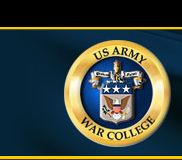Files
Download Full Text (4.3 MB)
Description
The emergence of new hybrid (state and nonstate) transnational criminal/terrorist franchises in Latin America operating under broad state protection now pose a tier-one security threat for the United States. Similar hybrid franchise models are developing in other parts of the world, which makes the understanding of these new dynamics an important factor in a broader national security context. This threat goes well beyond the traditional nonstate theory of constraints activity, such as drug trafficking, money laundering, and human trafficking, into the potential for trafficking related to weapons of mass destruction by designated terrorist organizations and their sponsors. These activities are carried out with the support of regional and extra-regional state actors whose leadership is deeply enmeshed in criminal activity, which yields billions of dollars in illicit revenues every year. These same leaders have a publicly articulated, common doctrine of asymmetrical warfare against the United States and its allies that explicitly endorses as legitimate the use of weapons of mass destruction. The central binding element in this alliance is a hatred for the West, particularly the United States, and deep anti-Semitism, based on a shared view that the 1979 Iranian Revolution was a transformative historical event. For Islamists, it is evidence of divine favor; and for Bolivarians, a model of a successful asymmetrical strategy to defeat the “Empire.” The primary architect of this theology/ideology that merges radical Islam and radical, anti-Western populism and revolutionary zeal is the convicted terrorist Ilich Sánchez Ramirez, better known as “Carlos the Jackal,” whom Chávez has called a true visionary.
ISBN
2190
Publication Date
8-1-2012
Keywords
to be supplied
Recommended Citation
Douglas Farah Mr.,
Transnational Organized Crime, Terrorism, and Criminalized States in Latin America: An Emerging Tier-One National Security Priority ( US Army War College Press, 2012),
https://press.armywarcollege.edu/monographs/552


